At the end of September, I travelled to Odense, in Denmark, to participate to my fourth Community Teams Visit at the Umbraco HQ offices. This two days gathering of Community Teams members has been organized yearly by Umbraco since 2018 and has always been a very productive and enjoyable moment for everyone.
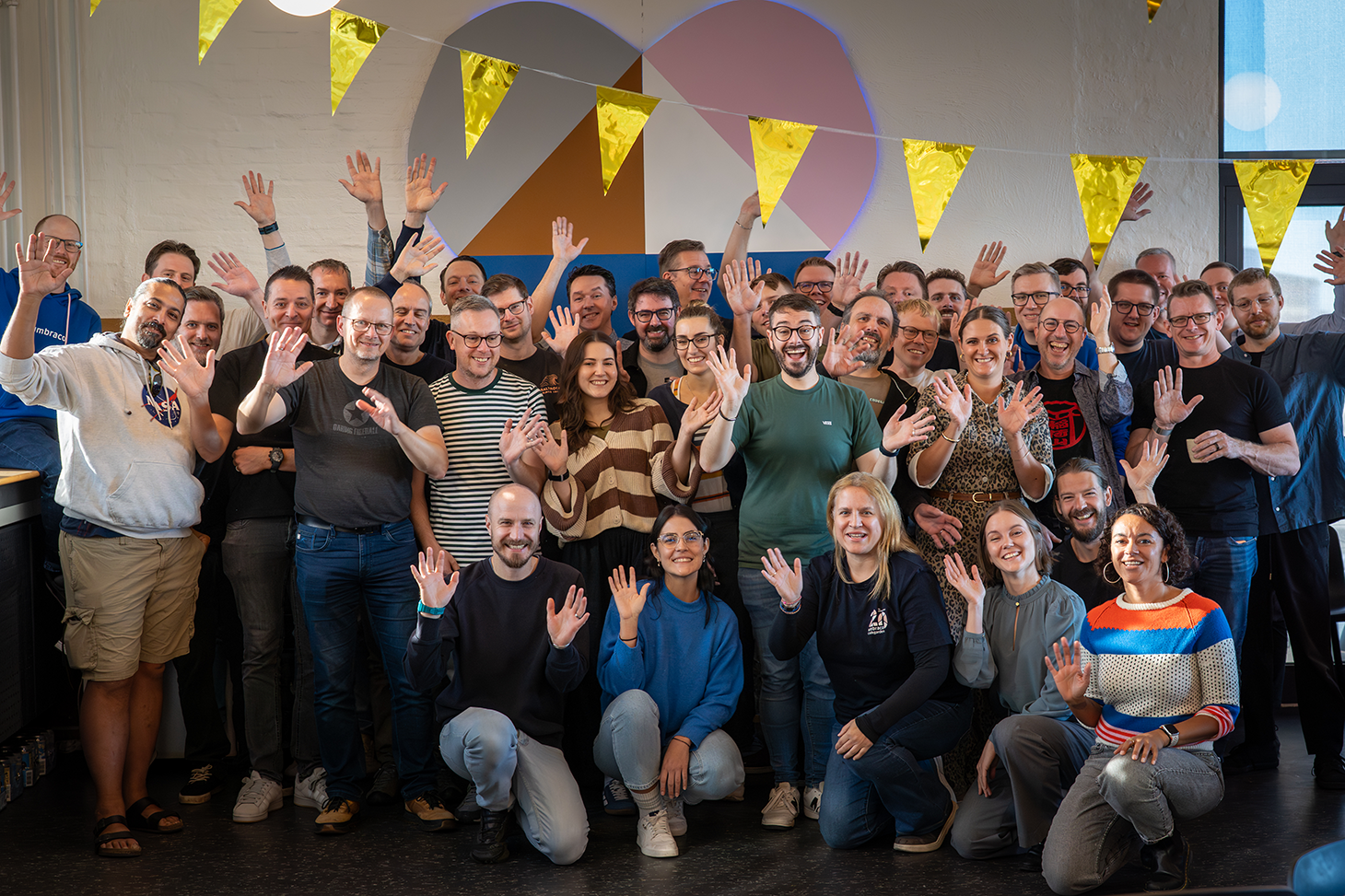
The participants of the 2025 edition
For me personally, it is in fact one of the highlights of my "Umbraco Year". In my opinion, this event is one of the best illustrations of what a successful and genuine Open Source collaboration can be all about. And this is the reason why I would like to share some of its insights and perspectives with you because, after all, this is a big part of what Umbraco is all about, isn't it?
In this article, I will mainly focus on the Community Teams Visit specifically, but if you want to know more about Umbraco as Open Source CMS and their initiatives around their Community, I invite you to go and have a look at the dedicated Umbraco Community web site.
Did You Say Community Teams?
Before getting into the Visit itself, let us first put some scope around what Community Teams are.
The origin
I follow Umbraco since 2010 and I have always been amazed by how aware they are of the implications of being Open Source, and by how seriously they act upon them.
The Community Teams initiative is a perfect illustration of that. It arose quite some years ago, when Umbraco HQ was only a few people and when the documentation about Umbraco was, well, basically, their online forum.
Umbraco became aware that they had to do better, and at some point decided to ask people from the Community to help them out.
A great move I think, in line with what Umbraco's perspective on community members has always been: they are the ones who know how Umbraco is used out there, and therefore they are the ones who know best what the "real world" is needing and expecting.
Umbraco HQ was building the sofware, the theory, but the Community was holding the usage, the practice. What was needed at that moment, was organized documentation that would explain the theory in a practical way.
So, this is how the first Community Team was born, the Umbraco Documentation Curators, composed of a few selected community members having the necessary experience and expertise, organized around a steward from Umbraco HQ.
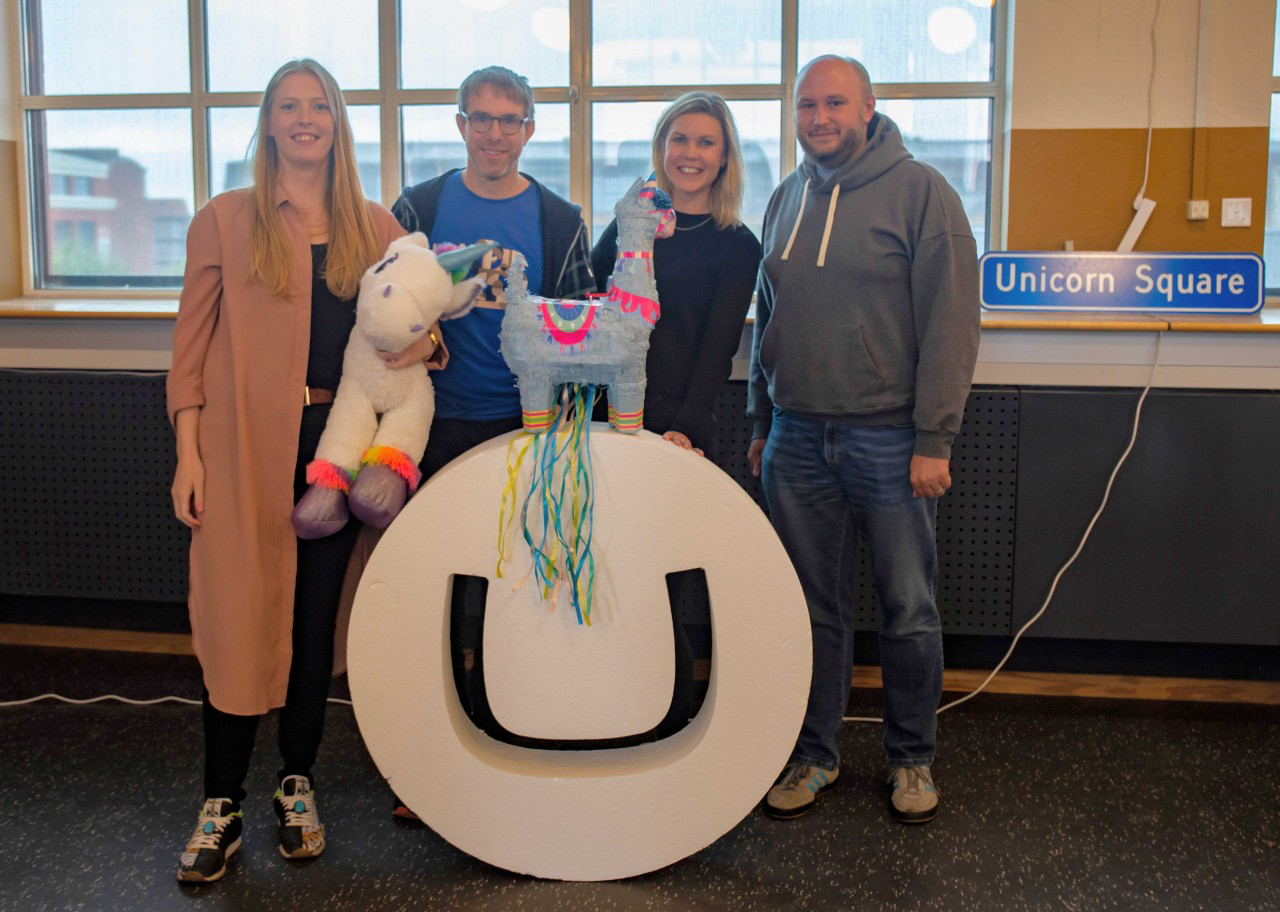
The Documentation Curators Team at their last Visit in 2022
How it went on
Fast forward through the years, a second team was created around 2016-2017 to help Umbraco HQ (aka Sebastiaan Janssen) with the reviewing of the CMS bugfixes and enhancements that were proposed by the community members. This is the team known today as the Core Collborators Team, which I joined in late 2020.
Because of the success of both of those teams, Umbraco decided to broaden the use of this concept. Community Teams and team members have come, and sometimes gone, through the years, around many various topics, sometimes very technical, like the Package Team or the Unicore Team - which helped migrate the Umbraco source code from ASP.Net to .Net Core -, sometimes much less, like the Diversity, Equity and Inclusion Team or the Sustainability Team.
But all with the purpose of improving the product and making it more firendly in their area of expertise.
You can find a list of the currently existing teams on the Community Teams Page.
Cool! Let's maybe get back to the Community Teams Visit part?
With this in mind, every year, we, the members of the Community Teams, are given the opportunity to join together in Odense for a Thursday-Friday visit. The Umbraco DevRel Team is organizing it all, with the help of the Community Teams stewards. Umbraco covers the costs of travel, lodging and food for everyone.
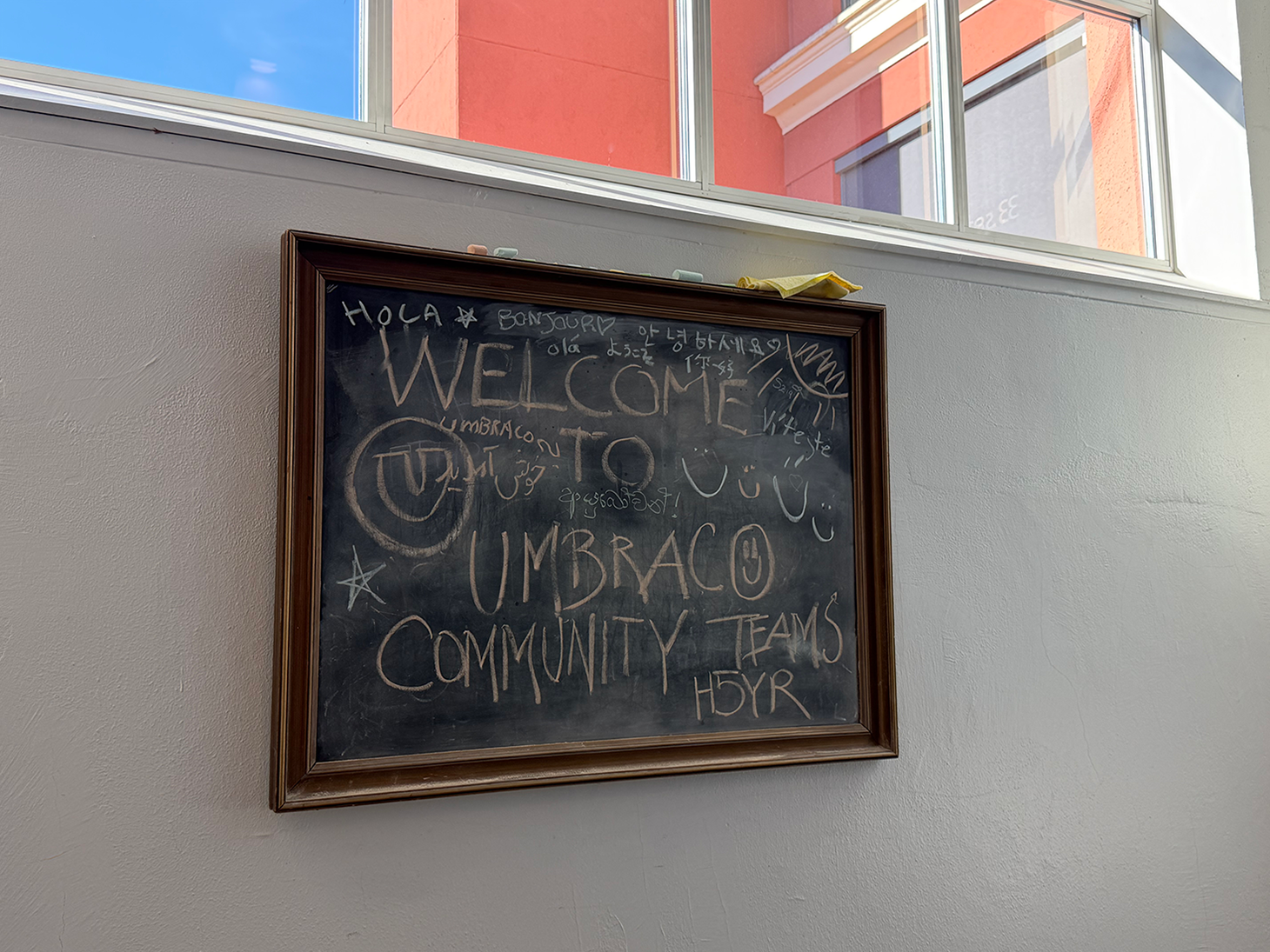
Umbraco HQ happy to see us
Yes, they do cover the costs which, to me, is another display of Umbraco's real consideration for their Open Source Community. I see it as their way of lowering as much as they can the barrier for any of us to actually be able to join the visit, wherever in the world we may come from (Hello Australia, USA, ... 😉).
No, it does not mean that we go there for two days of chats and fun at no cost.
The fact that the first travelling day and the visit itself are occuring during the week, implies that the participants give up some of their billable time, one way or another. And then they lose some private week-end time travelling back home.
Most importantly, we all joined our teams because we wanted to help improving Umbraco, so you can rest assured that the people attending the event are very motivated to make progress and get things done 😁!
Now, how does that all work out?
Concretely, most of us will arrive at some point on the Wednesday, check into our hotel and then, if it is not too late, head to Umbraco HQ, or else to the foreseen eating place.
The Umbraco DevRel Team will have sent a planning and itinerary for the entire event beforehand, so we will know where to go to grab food and get a first occasion to socialise, retrieve known faces and meet the new members of the different (new) teams.
Thursday morning is the official start of the event and the day kicks off with welcome words from the DevRel Team and from the CEO himself, emphasizing once again the importance that is given company-wide to the added value of all that will be happening.
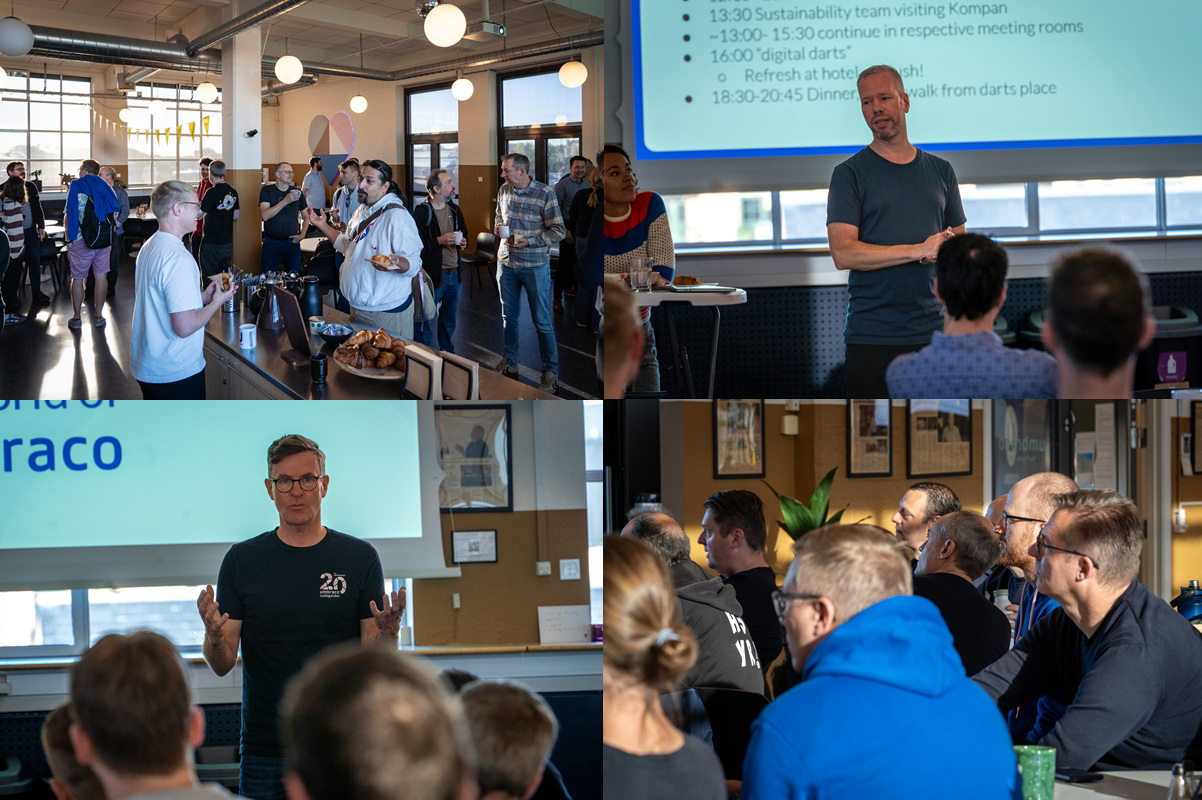
Kicking off the event on Thursday morning
Then, we quickly go through the planning, which follows more or less the same structure every year:
- Team-specific tasks are performed in a dedicated meeting room on Thursday as well as on Friday morning.
Paying a visit to other teams to discuss cross-teams topics is of course more than encouraged, it is one of the goals of the visit. - On Thursday night, everybody gathers for a social acivity followed by a dinner.
- Friday afternoon ends with a wrap-up session where every team presents the result of their two days activities.
Some teams, like the Sustainability Team, usually go on field trips to external companies on Thursday afternoon and have then an occasion to present what they have seen and discussed, and what could be some points of inspiration for Umbraco. - The visit ends on Firday evening at HQ, with their traditional Friday bar, extended into social activities and a dinner, usually pizza's.
As you can see, the days are fully packed and are a thoughtful combination of moments of gathering, working within our own team, and social activities.
The main task given to each team is to reflect on what has been achieved the previous year and to make plans - or already act - for the year to come. The variation in the themes that we are asked to consider during our activities is one of the aspects that make the event non-repetitive through the years.
The topics are a mix of Umbraco's actuality and more generic trends. This year, for instance, we had to set focus on the upcoming LTS version 17 and on generative AI.
This sounds great, but what is the actual point of going there?
As I mentioned in the introduction, the Community Teams Visit is one of the highlights of my yearly Umbraco activities because it allows me to participate in a very materialized and concrete way to the successful Open Source story between Umbraco and their community.
The rest of the year, collaboration occurs virtually, via remote code or document reviews that we do on our own, via online team meetings, chats etc. But this visit allows participants to experience Open Source collaboraton in real life, and I think it's great!!
Why? Well, let's see below 😁
🎯Team Focus
The visit is a unique opportunity to gather in-person with our teammates, who are sometimes spread in very different parts of the world.
For example, the Core Collaborators team has been composed of members located in Europe, Turkey, The United States or even Australia.
Being physically present for two full days, being able to focus solely on the team's activities and purposes, to work and celebrate achievements all together, is incomparable and so much more efficient and rewarding than meeting online, or having asynchronuous discussions on Slack.
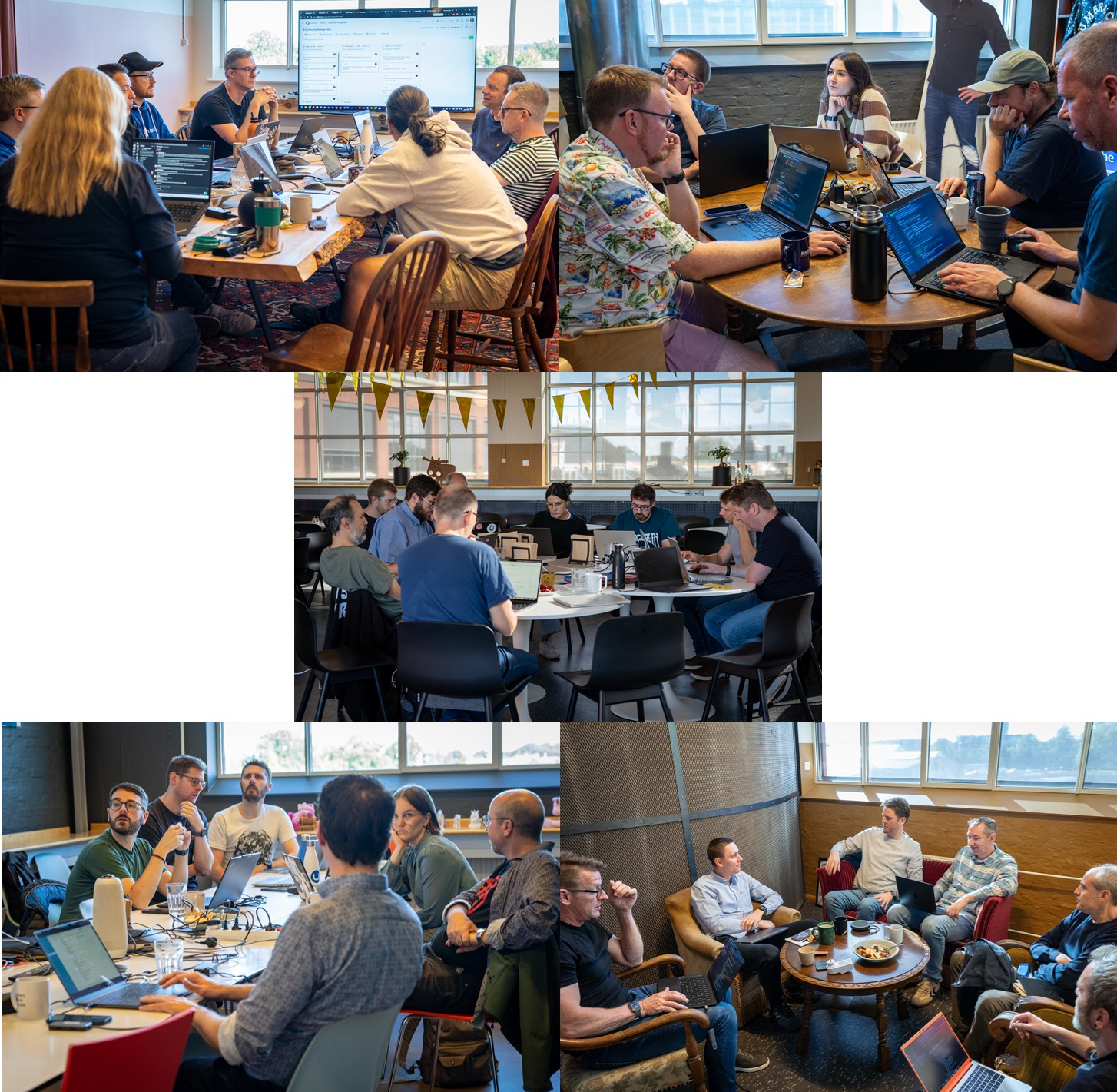
Focus time for everyone!!
If I look at the "Documentation Team revived for V17" for instance, which I joined this year, we had only fully finalized 2 documents (in about 2 months of existence) prior to coming to Odense. We left on the Friday evening with 10 documents completed!
How comes? Mainly because we could discuss, think out loud and take direct decisions together, as well as get direct insights and support from the HQ team (but that's for the next section).
With such good progress, we went home fully re-energized and with a new motto "Delete it, merge it, confetti's!" (yes, some documents became irrelevant for V17...)

Celebrating a new document update merged in the official documentation
💡 HQ members next door
One of the big advantages of being in Umbraco's own HQ is, of course, that the HQ people are literally next door and are made available to share their expertise with us and answer to our questions right away!!
This is a natural open door for improvised conversations but, also, the teams can identify topics of interest beforehand and the team steward can then ask to the appropriate HQ member(s) to pass by for discussing those specific points.
In preparation of this year's visit for instance, our Documentation Team realized that it would be very beneficiary to have some detailed explainations around the new backoffice architecture, and concepts like Extensions etc. Some parts were not completely clear to us yet and, since we are rewriting the documentation to targte V16/17, we felt that our visit was the ideal opportunity to get to understand the concepts correctly, before explaining them to others via the docs.
What then actually happened, is that we were given a full Thursday morning master class around the new backoffice architecture, presented by no less than the people who actually built it!
And during the rest of our focus times, there were always a few of them staying with us to give on-the-fly answers This was so much more efficient than our usual Slack discussions!
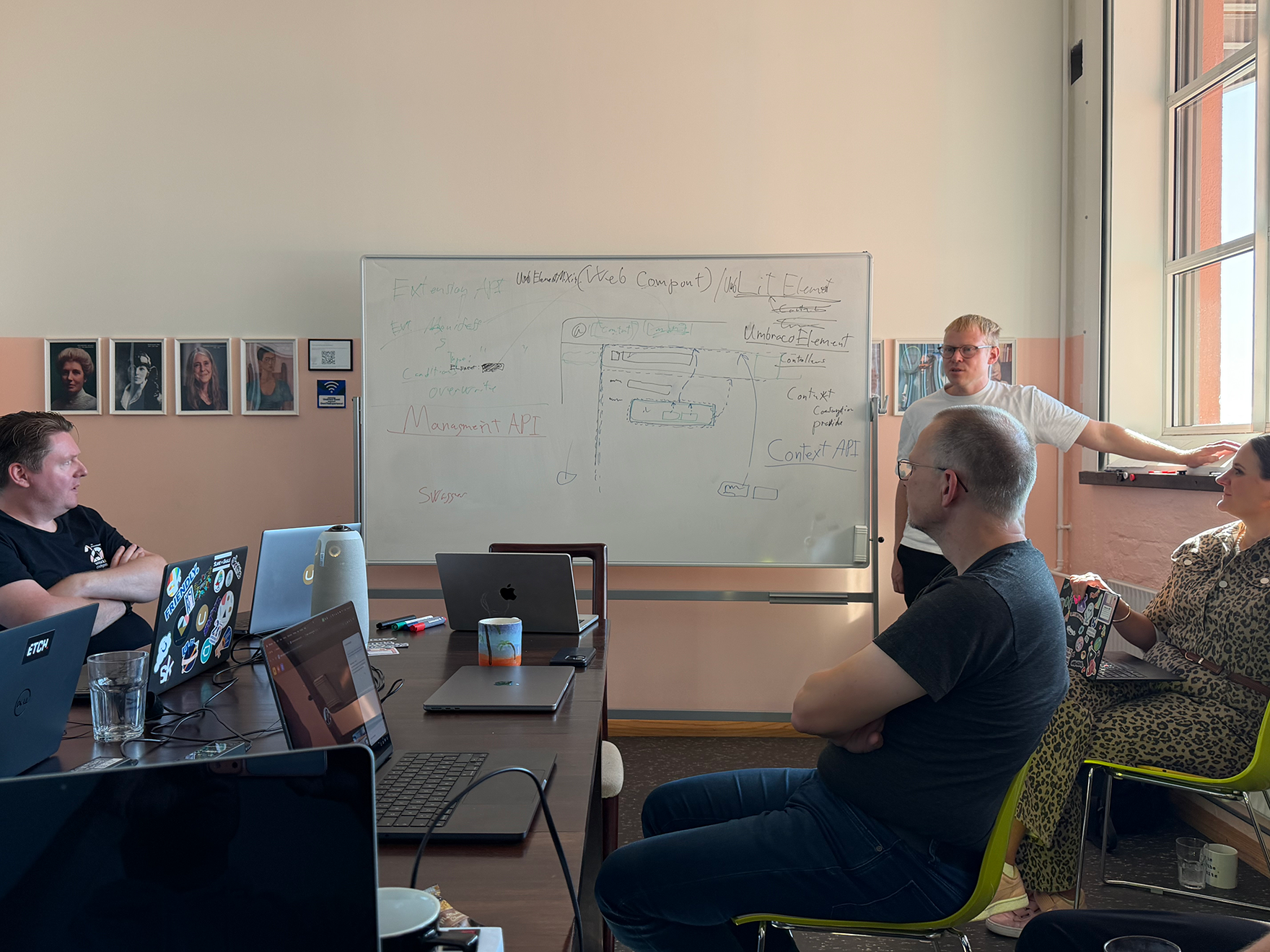
Umbraco Backoffice architecture master class by Niels Lyngsø
As another example, if I go back two or three years, Umbraco had foreseen one-hour sessions around the topics concerning the various visiting teams. One of those was about diversity, equity and inclusion and was animated by the CEO in person.
All those are truly unique moments given to us Community Members to interact in-person with the HQ teams.
👋 Interconnections between teams
Having multiple teams present at the same place and at the same time is a unique opportunity for interconnecting outside of our own group.
As I briefly mentioned already, on-the-spot, cross-teams interactions and collaborations can (and do) take place and, thanks to the increasing amount of Community Teams, hence topics, more and more opportunities are appearing through the years.
For example, discussions between the Core Collaborators and Diversity, Equity and Inclusion teams have helped making sure that the feedback sent to the contributors during code reviews are not only friendly, but also inclusive.
Or, this year, the Security and Privacy team provided some recommendations to the Package team regarding future privacy policy specifications on packages in the Umbraco Marketplace.
🙌 Catching up and having good times with everyone
Of course we also socialize and have some fun! The different daily breaks from focus moments and the evening activities and dinners are great times to catch up with known faces and meet with new ones, in a relaxed and fun atmosphere. Those are also ideal opportunities to get to know our teammates way much better than online.
I think that this is an aspect that should not be neglected, because the ties we bind then are going back home with us and definitely strengthen our online team spirit and team work afterwards.
Here again, the DevRel Team does wonders in finding unusual activities for us to participate to.
On Thursday evening last year, we went to play some typical Danish outdoor games. This year was all about playing electronic darts and then, on Friday evening, we had the opportunity to play with some Umbraco-branded classical games. Well, classical at least in some parts of the world. I mean, where else would you play umbDoccle 😅

Playing umbDoccle, Danish games and Darts
Also, the fact that all participants were staying at the same hotel allowed for impromptu and sometimes surprisingly technical late evening chats at the lobby's bar.
Some final words?
Well, I guess I said it all! My main goal was to share with you some "behind the scenes" glimpses at the Community Teams Visit and to give you a good view of what such a gathering actually consists of and why it has significance.
By sharing my perspectives on what I have experienced for the last four years, I wanted to emphasize its effective and useful purposes, as well as its very concrete outcomes: after two days of visit at Umbraco HQ, the participants head back home full of energy and new ideas, knowing what to focus on for the year to come and, of course, with some new friends made along the way.
I also touched the fact that the members of the different teams are well aware that being selected within a Community Team is far from nothing and that it comes with some level of responsibilities towards both Umbraco and the broader Community.
They therefore take their particpation very seriously and are eager to take full advantage of being present in Odense: full focus on their team's activities, interactions with other teams and with HQ members, and re-enforcing or making new connections with each other.
At the other end, I highlighted the fact that Umbraco is also very aware of the unique opportunity that is given to the HQ members of getting first-hand practical feedback, insights, advice and questions from their actual products users and/or from experts in their own fields.
To me, the Community Teams Visit is, without any doubt, a win-win situation that offers a unique possibility of "learning from each other and therefore getting better together", as I read or heard so well formulated at the end of the visit.
I will finish by mentioning this post from Emma Burstow, Director of the DevRel Team at Umbraco, a few days after this year's visit.

The squidgy vs squishy debate made it all the way to our Townhall Today. The whole company now know not only how brilliant the teams visit was, what we achieved and why we invest in this endeavor, but they also now know what the ceiling in Madklubben feels like (if James Hobbs is to be trusted in his description).
How to better summarize and illustrate the fact that Open Source is not just a marketing word for Umbraco, but that it is highly considered and acted upon? Without forgetting to enjoy our time and have fun together along the way?
Very lastly, if your interest for the Community Teams has been picked, stay alert of Umbraco news because there are regular renewals of the team members and, also, new teams are created from time to time.
So, who knows, we might meet next year in Odense. 😉
Links & References
I have referred to a few links in the course of the article, here they are again, grouped together for your ease of use:
- The global Umbraco Community web site
- Specific pages on Umbraco Community Teams, Advisory Boards and Guilds
- The Umbraco DevRel Team who organises all this
Pictures Credits
Many thanks for taking the great pictures and allow sharing them to:
- Ben Szymanski for: Hallway Welcome Board, Doc Teams confetti's & Backoffice Architecture Board
- Luuk Peters for: Electornic Darts
- Jason Elkins for: umbDoccle
- Umbraco HQ for all other material
